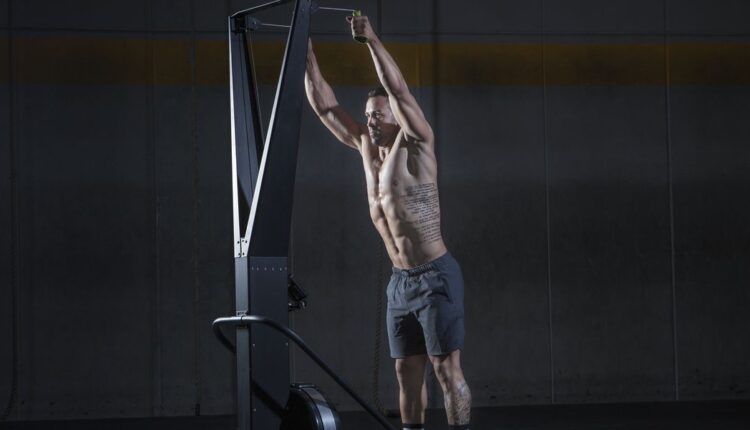This is Your Quick Training Tip, a chance to learn how to work smarter in just a few moments so you can get right to your workout.
WHEN YOU THINK of cardio machines, the first two that likely spring to mind are the treadmill and indoor bike. After all, treadmills have been around since the 1950s, and stationary bikes (in one form or another) even longer.
You’re probably also familiar with rowers, ellipticals, and stair climbers. Pretty much every gym has them, and each of them can give you a lung busting, calorie burning, endurance-building workout when you’d rather sweat indoors than hoof it or spin your wheels outside.
But if you’re lucky, your gym might have tucked away to the side of those machines—or perhaps even mixed in amongst the strength training equipment—another, equally effective cardio device hiding in plain sight: the SkiErg. Indeed, some would argue it’s the best of the bunch, especially if your current cardio plan focuses exclusively on your lower body.
What Is a SkiErg?
The SkiErg was introduced by cardio machine specialist brand Concept2 in 2009 as an indoor training option for cross-country ski athletes, but it quickly became popular among other athletes and gym-goers as well.
Why? Because unlike treadmills and spin bikes, the SkiErg (and the many “ski trainers” that followed on in its footsteps) flips the cardio script on its head. Instead of focusing primarily on lower body power and endurance, it targets the upper body even more so than rowers—and definitely to a greater degree than any cardio machine with convenient, ergonomic handles that move in tandem with pedals and footbeds. What’s more, unlike rowers, bikes, or any other machine that doesn’t require you to run, you’re able to exercise in an upright standing position, making it a top pick for some trainers.
That makes ski trainers unique among cardio machines—upper body endurance is the point, not an afterthought. If you’re into CrossFit or some other form of functional training, you’re probably intimately familiar with the tantalizingly tough cardio training you can accomplish on this machine.
One reason you might not have noticed the ski trainer at your gym is because it looks similar to a dual cable cross machine. Much like the latter, a ski trainer has two handles attached to cables on upheld arms, and the action is typically downward. But instead of loading the system as heavily as possible (as you might do for a cable fly, for example), you want the resistance to be both challenging and sustainable. In other words, the focus of a ski trainer is endurance. When you take on a workout, think structuring around time-based intervals, not reps.
Also, you should think total-body, not just upper. Yes, you’ll be mostly focused on your arms and back (i.e., pulling muscles), but the action also involves your legs, as if you are both pulling and pushing/propelling yourself along a cross-country ski track. In other words, the coordinated effort of your entire body wins the day (or in this case, the workout).
How to Use a SkiErg Machine
The fact that you’ve read this far shows that you understand the importance of integrating cardio into your training program regardless of your goals, and that it doesn’t have to exclusively be a lower body endeavor. Indeed, if you want a body that delivers on all levels—strength and endurance both above and below the waist—you need to train it that way, and that’s where ski trainers come in.
These machines aren’t standard at all gyms, but if yours has one, use it up to a couple of times a week to cap off your strength workouts—or make it a cardio workout all on its own. Need some inspiration? Here are a few ways to use the SkiErg to crush your cardio goals and elevate every aspect of your fitness.

Trevor Thieme is a Los Angeles-based writer and strength coach, and a former fitness editor at Men’s Health. When not helping others get in shape, he splits his time between surfing, skiing, hiking, mountain biking, and trying to keep up with his seven year-old daughter.



Comments are closed.